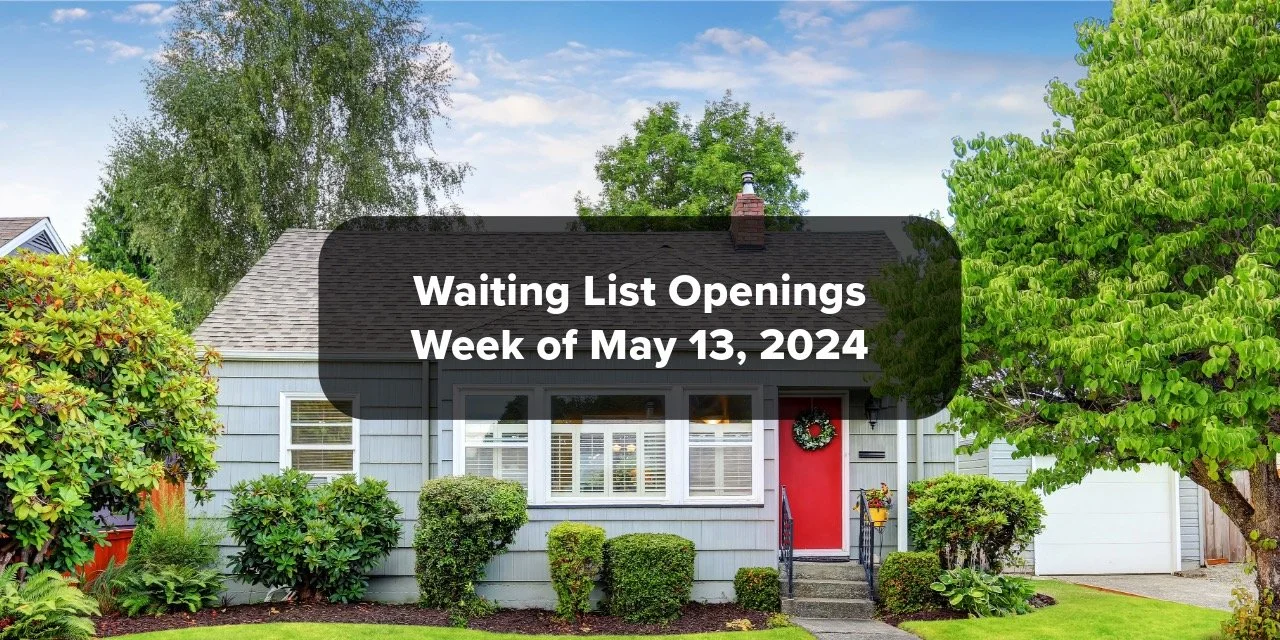Idaho Section 8 Housing
/Introduction
Idaho Section 8 Housing is a program run by the United States Department of Housing and Urban Development (HUD) that provides rental assistance to low-income families. This program is vital for many families who struggle to afford housing due to financial difficulties. In this article, we will discuss Section 8 housing in Idaho, including eligibility criteria, application process, income limits, fair market rents, waiting lists, and other relevant information. The purpose of this article is to provide helpful resources and information to those seeking affordable housing in Idaho.
Who Qualifies for Section 8 Housing in Idaho?
To qualify for Section 8 housing in Idaho, there are certain eligibility criteria that must be met. These include:
Income: To be eligible for Section 8 housing in Idaho, your household income must be below a certain level. The income limits for Section 8 housing in Idaho are based on the area median income (AMI) and family size. Generally, the lower your income, the higher your chances of qualifying for Section 8 housing.
Citizenship: Only U.S. citizens, legal permanent residents, and certain categories of non-citizens are eligible for Section 8 housing in Idaho.
Background: Applicants with a history of drug abuse, criminal activity, or other negative background issues may be disqualified from Section 8 housing in Idaho.
Other Factors: Other factors that may affect your eligibility for Section 8 housing in Idaho include your family size, the number of people in your household, and your rental history.
It's important to note that meeting the eligibility criteria does not guarantee that you will be approved for Section 8 housing in Idaho. The demand for affordable housing is high, and the availability of Section 8 vouchers is limited, so there may be a waiting list for housing assistance.
What is the Maximum Amount of Rent That Section 8 Will Pay in Idaho?
Section 8 housing in Idaho is designed to help low-income families afford safe and decent housing. The program does this by subsidizing a portion of the rent payment for eligible families. The amount of rent that Section 8 will pay in Idaho depends on several factors, including the size of your household and the fair market rent (FMR) for your area.
Section 8 calculates rent payments based on a formula that takes into account the total gross income of the household, the number of people in the household, and other factors. In general, Section 8 will pay the difference between 30% of the household's adjusted income and the FMR for the area.
The FMR is the maximum amount of rent that Section 8 will pay for a particular unit size in a specific area. The FMR is determined by HUD and is based on the local housing market. The FMR may vary by area and by unit size, so it's important to check with your local housing authority to determine the FMR for your area.
In Idaho, the maximum rent payment limits for Section 8 housing vary by county and by unit size. As of 2021, the maximum rent payment limits for a two-bedroom unit range from $727 to $1,044 per month, depending on the county. Keep in mind that these limits are subject to change and may be adjusted annually.
Factors that affect the rent payment amounts for Section 8 housing in Idaho include the size of the household, the income of the household, the FMR for the area, and other factors that may affect the availability and cost of rental housing in the area.
Income Limits for Section 8 Housing in Idaho
To be eligible for Section 8 housing in Idaho, your household income must be below a certain level. The income limits for Section 8 housing in Idaho are based on the area median income (AMI) and family size. The income limits may vary depending on the location of the rental unit and the size of the household.
Section 8 determines income eligibility by looking at the total gross income of all members of the household. This includes income from all sources, including wages, salaries, tips, child support, and public assistance. Income from non-citizens is generally not counted towards the income limits for Section 8 housing.
In general, the income limits for Section 8 housing in Idaho are set at 50% of the AMI for the area. However, some households may qualify for Section 8 housing even if their income is above the 50% AMI limit, as long as their income does not exceed 80% of the AMI.
For example, as of 2021, the income limit for a family of four in Boise County, Idaho is $38,200 per year for households at 50% of the AMI, and $61,150 per year for households at 80% of the AMI. These income limits may vary by county, and they are subject to change on an annual basis.
Strategies for qualifying for Section 8 housing based on income limits include maximizing deductions and exemptions on your tax return, reducing your taxable income, and increasing the size of your household. Keep in mind that meeting the income limits does not guarantee that you will be approved for Section 8 housing, as there may be other factors that affect your eligibility.
The following table shows current income limits for Idaho.
Fair Market Rents for Section 8 Housing in Idaho
Fair market rents (FMR) play a crucial role in the Section 8 housing program in Idaho. FMR is the maximum amount of rent that Section 8 will pay for a particular unit size in a specific area. Section 8 determines the FMR for each area based on the local housing market.
To determine the FMR, Section 8 conducts a survey of rental units in the area to determine the typical rent for different unit sizes. The FMR is set at the 40th percentile of the rent distribution in the local housing market. This means that the FMR is higher than the rent for 40% of the rental units in the local market.
The FMR for Section 8 housing in Idaho varies depending on the location and size of the unit. As of 2021, the FMR for a two-bedroom unit in Idaho ranges from $757 in rural areas to $1,138 in the Boise-Nampa metropolitan area. The FMR may be adjusted annually to reflect changes in the local housing market.
Fair market rents have a significant impact on Section 8 housing in Idaho. The FMR determines the maximum rent payment that Section 8 will make for a particular unit size in a specific area. If the rent for a unit is higher than the FMR, the tenant may be required to pay the difference between the rent and the FMR out of pocket. On the other hand, if the rent is lower than the FMR, the tenant may be able to save money on rent payments.
Overall, fair market rents are an important factor to consider when applying for Section 8 housing in Idaho. It's important to be aware of the FMR for your area and to choose rental units that are within the FMR limits to ensure that you are eligible for Section 8 housing assistance.
The following table shows current Fair Market Rents for Idaho.
How Do I Apply for Section 8 Housing in Idaho?
If you are interested in applying for Section 8 housing in Idaho, there are several options available for submitting your application. Here are some of the most common options:
Find your local housing authority: The first step in applying for Section 8 housing in Idaho is to find your local housing authority. You can search for your local housing authority online or by contacting HUD.
Gather required documents: You will need to gather certain documents to submit with your Section 8 housing application, such as proof of income, Social Security numbers, and photo identification.
Submit your application: Once you have completed your application and gathered all required documents, you can submit your application online, in person, or by mail.
Tips for a successful Section 8 housing application in Idaho include providing accurate and complete information, submitting all required documents, and following up with your local housing authority to ensure that your application is processed in a timely manner. Keep in mind that there may be a waiting list for Section 8 housing in Idaho, so it's important to apply as soon as possible and to be patient throughout the application process.
The following table shows Housing Authorities in Idaho and includes their contact information.
| Housing Authority | Contact Information | Website |
|---|---|---|
| Boise City Ada County Housing Authority | 1276 River St., Boise, ID 83702 (208) 287-1070 |
Visit Website |
| Idaho Falls Housing Authority | 124 New Sweden Ave., Idaho Falls, ID 83402 (208) 523-6413 |
Visit Website |
| Lewiston Housing Authority | 1113 11th Ave., Lewiston, ID 83501 (208) 746-3671 |
Visit Website |
| Nampa Housing Authority | 211 19th Ave. S., Nampa, ID 83651 (208) 466-2601 |
Visit Website |
| Pocatello Housing Authority | 711 N. 6th Ave., Pocatello, ID 83201 (208) 233-6276 |
Visit Website |
Section 8 Housing Idaho Waiting List
Due to high demand for affordable housing in Idaho, there may be a waiting list for Section 8 housing. The waiting list is managed by your local housing authority, and it can take several months or even years to receive Section 8 housing assistance.
The Section 8 housing waiting list works on a first-come, first-served basis. When you submit your application, you will be placed on the waiting list in the order that your application is received. The length of the waiting list varies depending on the availability of Section 8 vouchers in your area.
Strategies for reducing the wait time for Section 8 housing in Idaho include:
Apply as soon as possible: The sooner you apply for Section 8 housing in Idaho, the better your chances of being approved and receiving housing assistance.
Keep your information up-to-date: If your contact information or household information changes while you are on the waiting list, be sure to update your local housing authority to ensure that you remain on the list.
Explore other housing options: While you are waiting for Section 8 housing, consider exploring other affordable housing options in your area, such as low-income apartments or subsidized housing.
Contact your local housing authority for updates: Check in with your local housing authority periodically to get updates on your status on the waiting list.
The following table shows current Section 8 waiting list status in Idaho.
| Housing Authority | Waiting List Status |
|---|---|
| Boise City Ada County Housing Authority | Open |
| Idaho Falls Housing Authority | Closed |
| Lewiston Housing Authority | Open |
| Nampa Housing Authority | Open |
| Pocatello Housing Authority | Closed |
Other Low Income Housing Options in Idaho
While Section 8 housing is a popular option for low-income families in Idaho, there may be alternatives to consider if you are unable to qualify or are on a waiting list. Here are some low-income housing options with no waiting list in Idaho:
Low-income apartments: Many apartment complexes in Idaho offer units at reduced rents for low-income families. These apartments may be subsidized by the government or by private organizations.
Non-profit organizations: Non-profit organizations in Idaho may offer low-income housing options for eligible families. These organizations may have fewer restrictions than Section 8 housing and may be able to provide housing assistance more quickly.
Tax credit properties: Tax credit properties are apartment complexes that receive tax credits for offering reduced rent to low-income families. These properties may have income restrictions, but they typically have no waiting list.
It's important to note that low-income housing with no waiting list may have income restrictions, so you will need to meet certain income criteria to be eligible. Additionally, these properties may have limited availability, so it's important to act quickly if you find a suitable option.
How Long Does it Take to Get Approved for Section 8 in Idaho?
The timeline for Section 8 housing approval in Idaho can vary depending on several factors. Here are some factors that may affect the timeline for Section 8 housing approval:
Availability of vouchers: The availability of Section 8 vouchers in your area can impact the timeline for approval. If there are no vouchers available, you may have to wait longer for approval.
Completeness of application: If your Section 8 housing application is incomplete or missing required documentation, the approval process may be delayed.
Verification of information: Section 8 housing authorities must verify the information provided on your application, which can take time.
Waiting list: If there is a waiting list for Section 8 housing in your area, you may have to wait for your application to be processed before being approved.
The average wait time for Section 8 housing approval in Idaho can vary depending on the factors listed above. As of 2021, the average wait time for Section 8 housing approval in Idaho is around six months to one year, but this can vary by location and availability of vouchers.
Strategies for expediting the Section 8 housing approval process in Idaho include providing complete and accurate information on your application, responding quickly to requests for information, and following up with your local housing authority to ensure that your application is being processed in a timely manner.
It's important to be patient throughout the Section 8 housing approval process in Idaho, as the availability of vouchers and the number of applicants can impact the timeline for approval. However, by following these strategies, you can help to expedite the approval process and increase your chances of being approved for Section 8 housing in Idaho.
Conclusion
In summary, Section 8 housing can be a valuable resource for low-income families in Idaho who are struggling to find affordable housing. By understanding the eligibility criteria, income limits, fair market rents, and application process for Section 8 housing in Idaho, you can increase your chances of being approved for housing assistance.
However, it's important to remember that there may be a waiting list for Section 8 housing in Idaho, and the approval process can take time. If you are unable to qualify for Section 8 housing or are on a waiting list, there may be other low-income housing options available in Idaho, such as low-income apartments or non-profit housing organizations.
In conclusion, we encourage readers to explore all available resources for affordable housing in Idaho and to be patient throughout the application process. By taking advantage of all available options, you can improve your chances of finding safe, affordable housing for you and your family.










